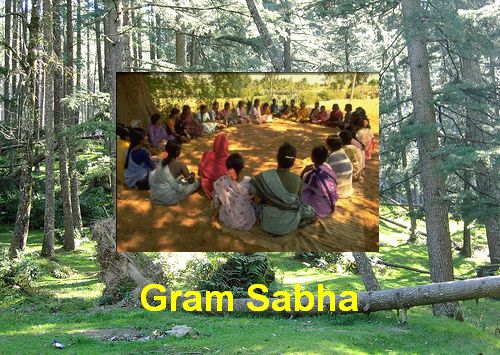**
Social diversities & vast size of the
country – FEDERAL system with STRONG CENTRE…not a result of any treaty/ agreement
amongst the states…states don’t enjoy the right to secede from FEDERATON..coz
it was not result of their consent
** Article 1 –
declares India to be a UNION OF
STATES
**QUASI FEDERAL – basically a
unitary state having nominal federal characteristics …less federal n more
unitary
***Neither pure
federal nor pure unitary …federal system …the national interest is supreme..Federal
in structure but unitary in spirit
**strong centre and
weak state
FEDERAL
FEATURES
|
UNITARY
FEATURES
|
|
SUPREMACY OF CONSTITUTION
*USA
: Judicial Supremacy
*UK:
Parliamentary Supremacy
*INDIA
: CONSTITUTIONAL Supremacy
|
DIVISION OF POWER
*In
the favor of centre
*residuary
power are left with centre
|
|
SINGLE CONSTITUTION
*For both centre n
states
* USA- separate consti.
For state n centre
|
||
SEPARATE GOVT. IN CNETRE AND STATE
*Separate
govt. u/n provision of constitution
*state
derive their authority n power not from central govt but directly from constitution
|
||
SINGLE CITIZENSHIP
*USA – provision for
double citizenship i.e. one of the
union n other for states
*INDIA – principle of
single citizenship
|
||
DIVISION OF POWER
*Union
List – 97 Nat’l & Int’l imp
Constitution
duznt allow state govt to legislate
*state
list – 66 local imp
Union
govt to legislate upon matters
*Concurrent
list – 47 both central n state
Union
govt prevail upon state laws in case of conflict
|
||
INTEGRATED JUDICIAL SYSTEM
*USA – one for
states & another for Union
* INDIA- SC at apex ,HC
at middle n subordinate courts at lower level
HC- not separate or II
to SC , but below n subordinate to SC
|
||
SUPREME AND INDEPENDENT JUDICIARY
*Judicial
power is not distributed in India
|
POWER TO THE UNION GOVT. TO CHANGE
BOUNDRIES N NAMES OF STATUS
*USA –
“indestructible Union of indestructible states” – neither the states
can secede from union nor the union can change the boundaries n territories
of the states
*INDIA- “indestructible Union of destructible states” – Union govt can change
the territories of the states
|
|
COUNCIL OD STATES AS
REPRESENTIVE HOUSE OF PEOPLE
*Upper
House- Rajya Sabha- representation of
diff states…differs in terms of popln
|
||
CONSTITUTION AMANEDMENT PROCEDURE
ART. 368
*Without
the approval of states amendment will not come into force
*state
govt – don’t initiate amendments
|
||
POWER OF THE UNION GOVT. TO APPOINT GOVERNOR IN THE
STATES
*Head of provincial
govt- appointed by Union govt. holds office during pleasure of Prez.
*to impose Prez’s rule
thru Governor
|
||
FINANCIAL DEPENDENCE OF THE STATES ON THE UNION GOVT
*various kinds of
grants on the recommendations by FIN
Comm appointed by Prez
|
||
UNEVEN REPRESENTATION OF THE STATES IN THE
COUNCIL OF STATES
*USA –
equal representation of the states
*
INDIA – states are not given equal representation in the Rajya Sabha
|
||
POWER OF PREZ TO GIVE ASSENT TO THE BILLS PASSED BY STATE LEGISLATUR ES
*prez can withhold the
assent
|
||
UNITARY STRUCTURE DURING EMERGENCY
*Union
govt exercises legislative n executive power of states
|
||
CONSTITUTION AMENDING POWER LIES WITH PARLIAMENT
*Approval of states iz
needed..only in certain provision of consti.
* majority of
provision ..even effecting the states ..can be amended by Parli. only
|
||
POWER OF CENTRE TO RESOLVE DISPUTE AMONG
THE STATES
*Union
govt as the coordinating body for the states
|





